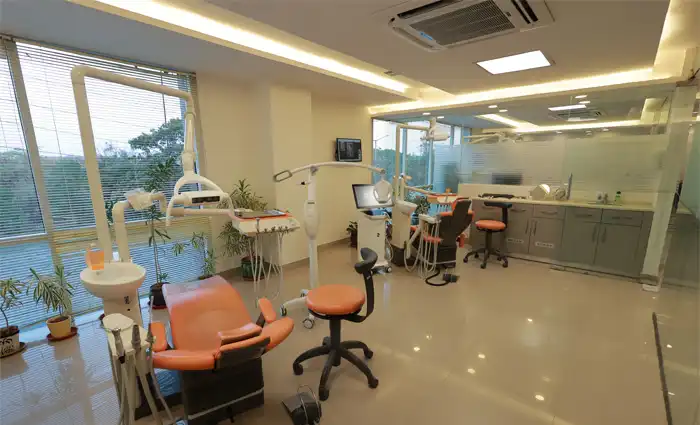Tooth Brushing
Tooth brushing should be done daily to maintain oral hygiene, as it is critical for effectively removing oral biofilm, which consists of bacterial plaque. Brushing your teeth is necessary to prevent the complications of plaque accumulation, such as caries, gingivitis, and halitosis. Ideally, brushing should be done twice a day with a soft-bristled brush and fluoride toothpaste. The brush’s size and form should fit inside the mouth so that it can reach every spot. Replace toothbrushes every three to four months, or as soon as the bristles fray.
Importance of Tooth Brushing
Tooth brushing maintains oral health and helps to
Remove plaque
Prevent gum disease
Freshen breath
Avoid cavities
Enhance appearance
Prevent tooth decay
Types of Toothbrushes
Tooth brushing maintains oral health and helps to
Manual toothbrush
The soft bristles on a manual toothbrush are half an inch wide and one inch tall. Gums, teeth, and interdental spaces are all cleaned as a result of brushing. The bristles are composed of nylon and the handle is made of plastic.
Electric toothbrush
A battery-powered brush with a rotating head that requires charging or batteries to run. The headset rotates, vibrates, and oscillates when the button is pressed aiding in tooth cleaning.
Ultrasonic toothbrush
A manual toothbrush with a fixed head and a piezoelectric ultrasonic transducer device that transforms energy into ultrasonic vibration.
Interdental toothbrush
It is a kind of tiny bottle brush with gliding bristles that fit between each tooth. Like dental floss, it cleans the back of teeth as well as in between them. Moreover, it can also reach dental bridges and prosthetic units.
Electric toothbrushes with advanced technology can effectively clean teeth because they are designed for gum care and whitening. This is especially useful for people who require extra dental care assistance, such as those who wear braces or have limited dexterity.
Manual toothbrushes are effective tools for oral hygiene. They provide an easy-to-use yet efficient method of dental care, as evidenced by their continued importance over time. When comparing electric and manual toothbrushes, electric brushes provide added benefits with advanced features and thorough cleaning.
Selection of a Toothbrush
Choosing the right brush is the first part of making sure your teeth are cleaned properly. While picking the toothbrush, make sure to use a soft-bristled brush with zig-zag bristles to allow the longer bristles to reach deeper areas. Select a toothbrush head that can easily fit into the mouth and can brush 1-2 teeth at a time. Make sure the toothbrush has soft bristles and a small head so that it fits comfortably in the child’s mouth when choosing one for them.
Tooth Brushing Techniques
The common technique is known as bass, which involves holding the brush on the tooth surface at a 45-degree angle and brushing in a gentle circular motion. The brush should be angled so that the bristles are just below the gum line. Use a soft pressure brush to clean the teeth’s exterior, then repeat the process to clean the teeth’s interior. Focus on a single tooth at a time and perform about 3 to 4 cycles of brushing. Brushing teeth for 2 minutes twice a day is suggested by dentists.
Types of Toothpaste
Regular brushing, flossing, and using toothpaste are essential for dental hygiene. Many different types of toothpastes are available, and the most common types of toothpastes are
- Fluoride toothpastes
- Sensitive teeth toothpastes
- Whitening toothpastes
- Natural and herbal toothpastes
- Children's toothpastes
Common Mistakes to Avoid while brushing
Brushing teeth in the right way is important for maintaining healthy gums and teeth. A few common mistakes to avoid are
- Brushing too hard
- Using a toothbrush for too long
- Missing certain areas of the mouth
- Using medium or hard toothbrushes
- Scrubbing teeth in the horizontal direction
- Clenching teeth while brushing
- Not changing brushes more often
- Brushing in the same direction
- Not flossing regularly
Care and Maintenance of Toothbrushes
Maintaining dental hygiene requires careful toothbrush maintenance and storage. Brushes should be rinsed with tap water. Make sure to store them upright and let them air dry. When the brushes are wet, do not store them in closed containers. Ensure that the toothbrushes are stored separately. Replace your toothbrushes every two to three months and use antibacterial mouthwash regularly to keep them clean.
Proper maintenance of teeth is key to achieving good oral and overall health. Schedule regular checkups and cleanings at Dr. Motiwala to maintain your oral health.




